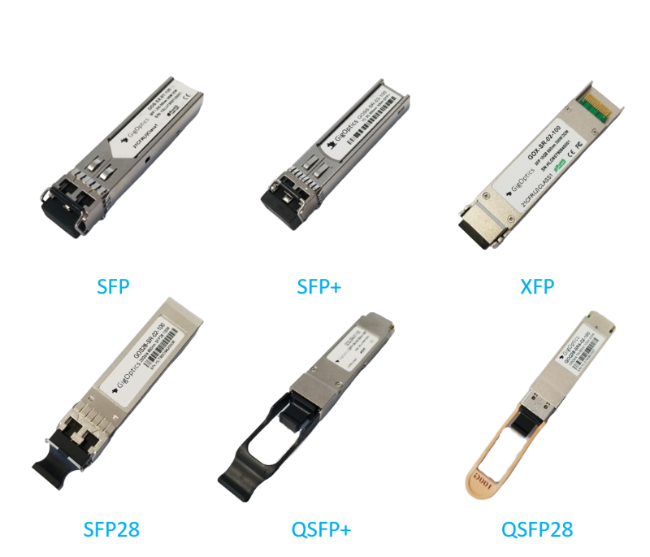
How to Choose the Right Optical Transceiver for Your Network
If you’ve ever tried to expand or upgrade your network, you know the moment comes when someone asks, “Which optical transceiver should we use?”
It’s a small piece of hardware, but it can make or break the stability of your entire system. I’ve seen projects delayed for weeks simply because the wrong module was ordered — wrong reach, wrong connector, or incompatible firmware.
So, let’s break it down. Here’s a straightforward guide to choosing the right optical transceiver, based on both technical factors and real-world lessons learned from the field.
1. Understand Your Network Requirements Before You Shop
Too often, people start by looking at product catalogs without mapping their actual needs.
Ask yourself:
- What’s the required data rate? Are you upgrading to 10G, 25G, 100G, or even 400G?
- How far does the link need to run? Is it a 50-meter in-rack connection or a 40 km metro link?
- What kind of cable is in place? Single-mode fiber, multimode fiber, or copper?
A clear requirement list prevents you from buying a high-spec module where a cheaper, shorter-reach version would have done the job.
2. Match the Transceiver Type to Your Application
Optical transceivers come in many form factors—SFP, SFP+, SFP28, QSFP28, QSFP-DD, OSFP, and more. Each has its sweet spot:
- SFP / SFP+: 1G or 10G, ideal for enterprise access layers or short data center runs.
- SFP28: 25G uplinks in modern data centers or aggregation switches.
- QSFP28: 100G backbone connections, often in leaf-spine architectures.
- QSFP-DD / OSFP: 400G for high-density, high-performance environments.
Tip from experience: If you’re planning an upgrade in the next 12–18 months, consider a module that supports your future bandwidth needs. It often costs less to buy once than to replace in a year.
3. Consider Distance and Optical Reach
This is where you’ll see terms like SR, LR, ER, ZR in product names:
- SR (Short Reach): Multimode fiber, usually up to 300m (great for inside the same building).
- LR (Long Reach): Single-mode fiber, typically up to 10 km.
- ER / ZR: Extended reach, from 40 km to 80+ km, often for metro or inter-city links.
Real-world note: I’ve seen customers order LR modules for a 100m run—technically it works, but it’s a waste of budget and introduces unnecessary laser power for a short hop.
4. Don’t Ignore Connector Type and Polarity
Nothing stalls an installation faster than realizing the connector doesn’t fit.
Common options:
- LC Duplex: Most common for modern optical modules.
- SC: Older standard, still in some telco gear.
- MPO/MTP: High-density connectors, often used in 40G/100G links.
And yes, polarity matters. If you’re using MPO, make sure you’ve matched Type A, B, or C to your patch panels.
5. Check Compatibility — It’s More Than Just Form Factor
This is the part people underestimate. A transceiver might physically fit but still fail because of firmware or vendor locking.
- If your switch vendor has a compatibility list, use it.
- If you’re using “open compatible” modules, test a sample before placing a large order.
- Watch for DOM (Digital Optical Monitoring) support if you rely on in-system diagnostics.
I’ve worked with network teams that saved thousands by using compatible third-party optics, but only after thorough lab validation.
6. Factor in the Environment
Standard commercial modules work fine in climate-controlled spaces. But if your gear is going into a roadside cabinet, factory floor, or rooftop base station, you’ll want industrial-grade modules (–40°C to +85°C).
They cost more, but it’s cheaper than sending a technician to a remote site in the middle of winter because a standard module froze.
7. Think About Maintenance and Lifecycle
An optical transceiver isn’t a one-time decision.
Ask:
- Is it hot-swappable?
- Will the same model be available for the next 3–5 years?
- Does the supplier offer replacements quickly?
In one project I supported, a client chose a rare DWDM model to save money upfront—only to find it was discontinued 18 months later, forcing a redesign of their link plan.
Conclusion
Choosing the right optical transceiver is about more than ticking a few boxes on a spec sheet. It’s about matching technical requirements, anticipating future needs, and avoiding avoidable headaches down the line.
If you take the time to map your network, confirm compatibility, and select with the environment in mind, you’ll end up with a stable, cost-effective, and future-ready connection.
Because in networking—as in life—it’s often the smallest components that make the biggest difference.